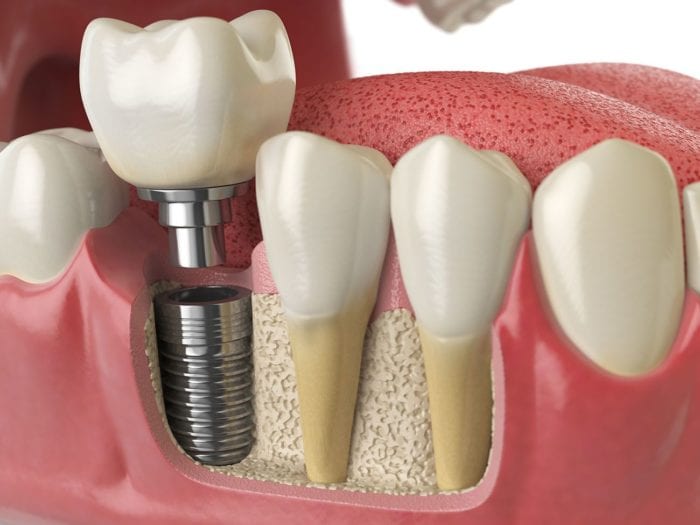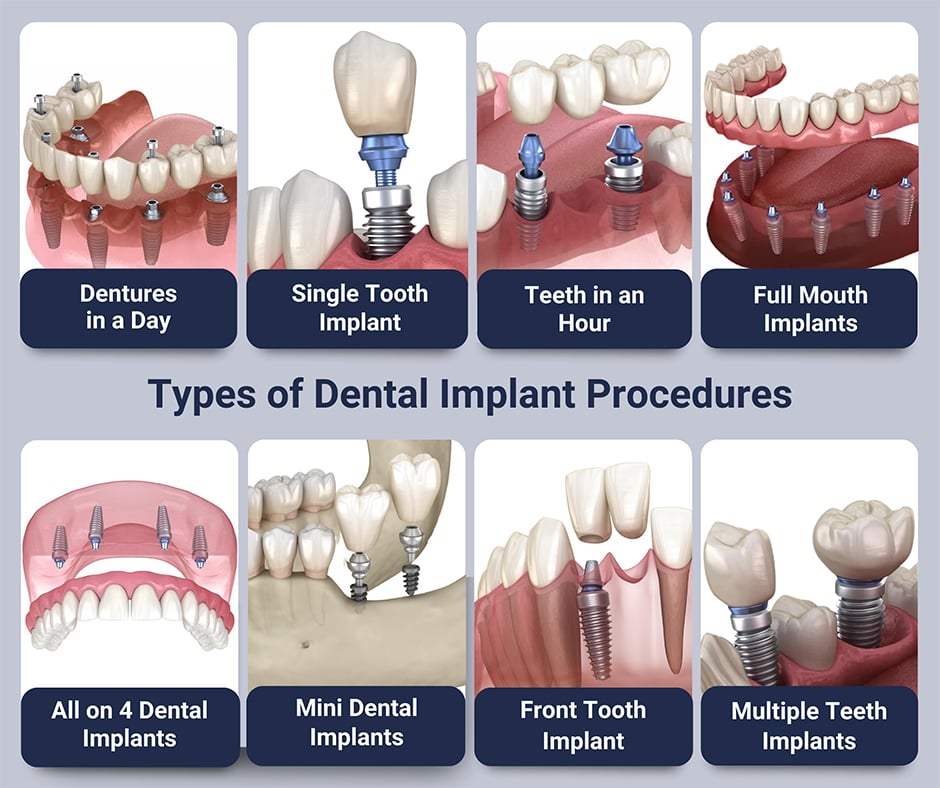The Buzz on Dental Implants
The Buzz on Dental Implants
Blog Article
8 Easy Facts About Dental Implants Shown
Table of ContentsLittle Known Facts About Dental Implants.Little Known Facts About Dental Implants.Some Known Details About Dental Implants Some Of Dental Implants
are clinical tools operatively dental implanted right into the jaw to recover a person's capacity to chew or their appearance. They supply support for artificial (fake) teeth, such as crowns, bridges, or dentures. When a tooth is lost as a result of injury or disease, an individual can experience problems such as fast bone loss, faulty speech, or changes to eating patterns that cause pain.
Structure of The Oral Implant System choosing dental implants, speak with your oral copyright about the potential benefits and dangers, and whether you are a candidate for the procedure. Points to think about: Your total wellness is an important variable in figuring out whether you are an excellent prospect for oral implants, the length of time it will certainly take to heal, and for how long the dental implant may remain in place.
Smoking might influence the healing procedure and lower the lasting success of the dental implant. The healing process for the implant body may take a number of months or longer, throughout which time you generally have a temporary abutment instead of the tooth. the dental implant procedure: Very carefully adhere to the dental hygiene instructions offered to you by your dental supplier.
The Greatest Guide To Dental Implants
Implant failing can lead to the demand for one more operation to deal with or change the implant system. Recovers the ability to eat Recovers aesthetic appearance Aids keep the jawbone from reducing as a result of bone loss Preserves the wellness of the surrounding bone and periodontals Helps keep adjacent (neighboring) teeth stable Boosts lifestyle Damages to surrounding all-natural teeth during implant placement Injury to the surrounding cells throughout surgical procedure, such as sinus opening Injury during surgical treatment (for instance, crack of surrounding jawbone) Poor function, such as seeming like the teeth do not attack with each other normally A feeling that the tooth hangs or twisting in position arising from an abutment screw loosening Implant body failing (looseness of the dental implant body) due to systemic infection, which may be more probable in people with uncontrolled diabetes due to local infection in bone and gum tissues supporting the implant body as a result of postponed healing, which might be much more most likely in patients who smoke Difficulty cleaning the gum tissues around the implant, causing inadequate dental health Untreated gum disease Post-surgical feeling numb due to nerve impingement or damage Always inform healthcare providers and imaging service technicians that you have oral implants prior to any type of magnetic resonance imaging you can look here (MRI) or x-ray treatments.
FDA is not conscious of any adverse events reported for MRI or x-ray procedures with oral implants. Oral implants systems are typically constructed from materials that follow international consensus criteria of the International Organization for Standardization (ISO) or ASTM International. These criteria have information of what makes a risk-free material.
Various other products such as gold alloys, cobalt-based alloys, titanium alloys, or ceramic products are often utilized. The safety accounts of these materials are well-known. Dental implant systems are examined according to international agreement criteria. Biocompatibility screening, to show that bodily call with the gadget does not trigger complications like irritability or allergy, is part of the analysis that helps make certain the products in the oral implant system are safe and do not create adverse effects when dental implanted in individuals.

How Dental Implants can Save You Time, Stress, and Money.
Some people are not eligible for oral implant surgery. It is for oral doctors to run on people with: severe illnessuncontrollable metabolic diseasebone or soft cells condition or infectionIf these issues are fixed, a person can have the surgical procedure. Dental Implants. In, oral specialists avoid from operating people with: If individuals with any one of the above go through dental implant surgical treatment, there is a higher threat of the implant stopping working
Some individuals have a jawbone irregularity that protects against enough bone for a dental implant from developing. In such instances, a specialist may require to perform a ridge adjustment. This involves lifting the gum tissue to subject the area of deformed bone. The doctor will certainly after that utilize a bone or bone replacement to repair and construct up the location.
Dental implant surgical treatment is a customized procedure. It's not the same for everyone. But the complying with provides a basic introduction of what you can expect your dentist, oral specialist, periodontist or prosthodontist to do: Put the implant surgically. Provide you time to recover. Attach the blog post and last crown, bridge or denture.
Next off, your doctor will very carefully put the dental additional reading implant into your jaw. Ultimately, your doctor will certainly rearrange your gum tissues and shut the cut with stitches. If your implant is near the front of your mouth, your dentist will make a momentary our website tooth for you to use until you recover. By doing this, you won't have a void in your smile while you recuperate.
The Ultimate Guide To Dental Implants
Your copyright can tell you what to expect in your circumstance. During the recovery stage, your jawbone ought to fuse to the oral implant. This process, called osseointegration, is crucial for stability and long-lasting success. This process can take anywhere from 3 to 9 months. In some cases, it may take longer.
As soon as your dental implant heals, your dental practitioner can connect the abutment (small adapter post) and your final restoration (crown, bridge or denture). This usually takes concerning one hour to complete and might call for a second small surgery. You should not feel any type of discomfort during your dental implant treatment since your company will make use of medicine to numb your gum tissues.
Report this page